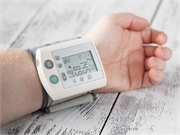Remote Monitoring May Help Control High Blood Pressure
By Amy NortonHealthDay Reporter

MONDAY, Aug. 31, 2020 (HealthDay News) -- Telemedicine might help people with stubbornly high blood pressure get their numbers down -- and possibly lower their risk of heart disease and stroke in the long run, a new study suggests.
Doctors already recommend that people with high blood pressure use a home monitor to track their numbers. But research suggests that home readings, alone, only make a small difference in getting the condition under control.
"People really don't have the agency to act [on those readings] on their own," said Dr. Karen Margolis, executive director of research at the HealthPartners Institute in Minneapolis.
And if there is no clear plan for what to do about high home numbers, she said, any issues may only come to light at the periodic doctor visit.
So Margolis and her colleagues tested a "telemonitoring" program designed to give patients more help: Their home readings were sent electronically to a pharmacist within the health system who then had regular phone "visits" with the patients.
Over the next 18 months, the tactic worked. Compared with patients on standard care, those in the telemonitoring program lowered their blood pressure by an extra 7 to 10 points, on average, the study found.
And over five years, they were half as likely to suffer a heart attack or stroke, or develop heart failure, according to the report.
That finding, Margolis said, fell just shy of statistical significance -- which means it could have been due to chance. But, she said, it may also be because the number of patients who suffered cardiovascular trouble was fairly small. That makes it harder to pick up a statistically significant difference.
Dr. Tracy Stevens, a cardiologist and volunteer expert with the American Heart Association, agreed. "This cries out for larger studies," she said.
But the broader message, according to Stevens, is that home monitoring is critical.
"A blood pressure measurement taken in the doctor's office may not reflect what's going on in our daily lives," said Stevens, who is also a professor of medicine at the University of Missouri-Kansas City School of Medicine.
"We want to treat the home blood pressure," she said, "not the office blood pressure."
People cannot assume their blood pressure is under control just because they "feel fine," Stevens stressed.
"High blood pressure is the silent killer," she said. And it contributes not only to heart disease and stroke, but also to dementia, kidney disease, potentially blinding eye disease and erectile dysfunction.
The new findings -- published Aug. 31 in Hypertension -- are based on 450 patients with uncontrolled high blood pressure. Their readings were consistently at or above 140/90 mm Hg (or 130/80 mm Hg, if they had diabetes or kidney disease).
Half were randomly assigned to stick with standard care, while the rest took part in a one-year telemonitoring program. Those in the telemonitoring group were given blood pressure monitors that sent their readings to a secure website. For the first six months, they had phone calls with a pharmacist every two weeks, until their blood pressure was under control. Then the visits were trimmed to every two months.
The pharmacists, Margolis said, did more than tweak medication doses. They also discussed managing side effects and lifestyle habits.
Over 18 months, the study found, patients in the telemonitoring group saw a greater improvement in their blood pressure. And at year five, 4.4% of them had suffered a cardiovascular complication -- compared to 8.6% of those in the standard-care group.
Margolis said the findings support taking regular home blood pressure readings and acting on them.
And that's important, Stevens said, not only to catch stubbornly high numbers: Some people have elevated readings in the doctor's office, but not at home -- what's known as white-coat hypertension -- and can end up being "overtreated."
Right now, Margolis said, some health systems do have telemonitoring programs similar to the one studied.
But, Steven added, even without such technology, people can track their numbers at home with a basic monitor and call their doctor with any concerns.
Telemonitoring and phone visits do have costs. Margolis and her team calculated them to be about $1,500 per patient. But with fewer medical complications, that translated into money saved, at $1,900 per patient.
More information
The American Heart Association has advice on home blood pressure monitoring.

The news stories provided in Health News and our Health-E News Newsletter are a service of the nationally syndicated HealthDay® news and information company. Stories refer to national trends and breaking health news, and are not necessarily indicative of or always supported by our facility and providers. This information is provided for informational and educational purposes only, and is not intended to be a substitute for medical advice, diagnosis, or treatment.

